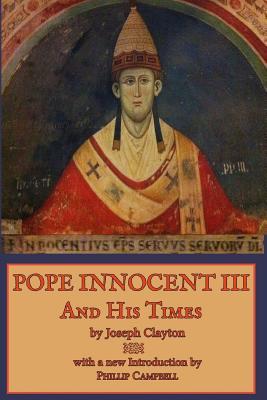In the long history of the Catholic Church, 266 men have sat upon the throne of St. Peter. Most have been unremarkable, no better or worse than any other pastor. Of many we know very little save their pontifical names and regnal dates. Some, of course, have been scoundrels - and what exactly constitutes a "bad pope" has been discussed intensely amongst the devout, especially in recent years. A modest number of popes have been truly great men, and some of them even saintly. As of 2016, the Church recognizes 81 popes as saints. Close to 40% of these, however, are venerated by virtue of a martyrdom, not necessarily because of their personal holiness.
But even among the popes who were truly great or saintly, there is a still smaller subcategory: popes who have been so influential as to define or shape the character of the age in which they lived. Pope Innocent III, the subject of this work, undoubtedly belongs to this category, and in his company are very few others; perhaps only St. Gregory the Great, St. Gregory VII, and Bl. Pius IX stand in his illustrious company.
To say Innocent III epitomizes the character of the age is no overstatement. He is frequently cited in medieval textbooks as the exemplification of a powerful papacy at the height of its temporal influence. His teachings on the relation between the sacerdotium and imperium summarize the best of the medieval tradition, often referred to as the Two Sword theory (cf. Luke 22:38), where the two swords held by St. Peter represent the temporal and spiritual authority, both of which are in the keeping of the Church - though one is delegated to the state. In his actions in relation to the great figures of his time, Pope Innocent III is the dominant figure, determining the direction of Christendom by his assent or dissent. He received England as a feudal fief from King John, bartered with the patrimony of the Hohenstaufen emperors to strengthen the power of the Church, summoned crusades, chartered the University of Paris, gave the world the Franciscan Order, and called the greatest ecumenical council of the Middle Ages. His very life and thought characterized the 13th century.
-From the Introduction.
This book has been completely reprinted from the original, it is not a facsimile reprint.
